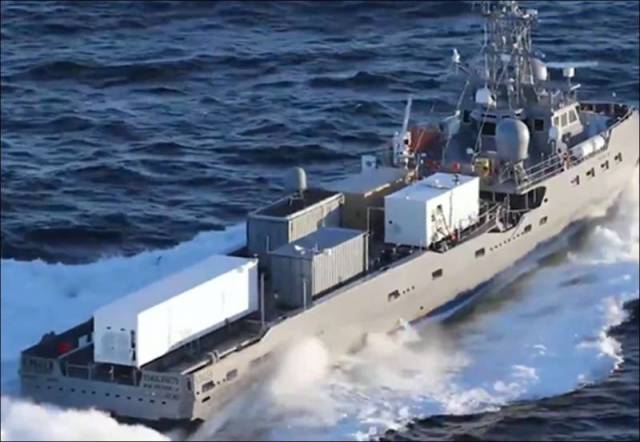
Image source: topwar.ru
The US Navy and Marine Corps are changing their concept of unmanned ships (vessels). Last month, it became known about the refusal of the US Navy from the project of an unmanned large-displacement submarine. The question is also raised about the future of an average unmanned ship. The Marine Corps, in turn, was puzzled by the prospect of creating their own unmanned ship for the needs of amphibious operations.
The Defense News publication writes that the Marine Corps is preparing for dispersed operations in the vast Indo-Pacific region. The command of the USMC is going to use unmanned systems for a variety of purposes in the context of amphibious operations – from data collection and transmission to logistics, from the transfer of troops and cargo to the search and firing at targets.
For example, an unmanned aerial vehicle MQ-9A was purchased to conduct aerial reconnaissance and relay communications. But even more Marines are interested in an unmanned long-range surface ship that could perform tasks to support amphibious operations.
Metal Shark announced in January 2021 that it would develop for the Marine Corps "a network of unmanned ships traveling autonomously over long distances and carrying barrage ammunition to hit targets at sea and on land." Naturally, the command of the USMC was interested in the possibility of using such unmanned ships in operations in the Indo-Pacific region.
Such unmanned boats can track and destroy targets at a fairly long distance. They are completely autonomous, but can be staffed by people if necessary. The Marine Corps, as reported by its Defense News command, expects to receive prototypes in the third quarter of fiscal year 2022 to continue testing and refinement.
In turn, the command of the 5th Fleet of the US Navy rethought the idea of acquiring a medium unmanned ship. A special task force is responsible for the use of unmanned solutions and artificial intelligence. Its functions also include testing unmanned solutions that could be used during operations in the Middle East.
The group's specialists came to the conclusion that a more profitable and reasonable solution would be to use smaller unmanned ships that can perform tasks of studying the battlefield and providing data on the current situation to the fleet.
Vice Admiral Scott Conn, deputy commander of Naval Operations for combat Requirements and Capabilities, told Defense News that the Navy will think a lot about the prospects of building and launching a medium unmanned ship. A large unmanned vessel, the vice admiral noted, is hardly the best choice for the American navy in the context of the tasks that it would have to perform.
The prospects for the development of a large unmanned underwater vehicle are not yet clear. The Navy proposed to cancel the Snakehead LDUUV program in the budget request for fiscal year 2023. The reason for this proposal is the inability of the device to interact with most submarines of the American fleet due to the lack of the necessary interface. Also, the project was carried out with delays, as a result, the command decided that it was not worth doing it yet.
